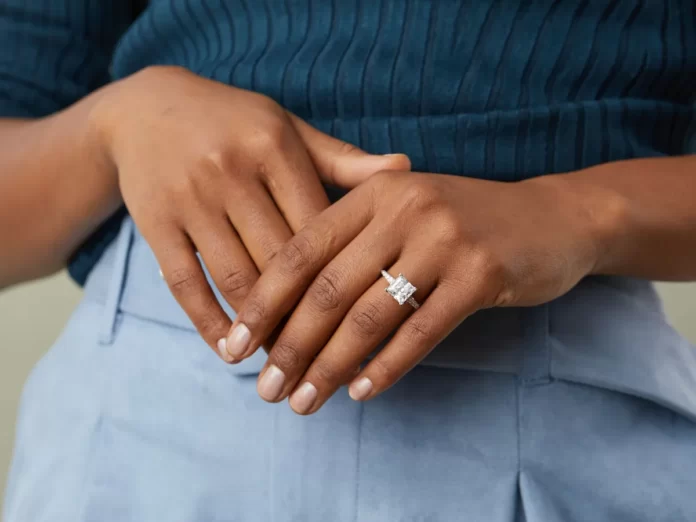Engagement rings may seem simple, but each set has several design features. Knowing the difference between these parts can help you to explore your options and communicate your preferences to your partner or jewelry specialist. With unlimited options of styles and collections, discovering the ideal engagement ring can be daunting.
Below are frequently used engagement ring terms and their meanings:
Shank
A shank, also known as the band, refers to the bottom part of the ring that wraps around the finger. The inside part of the shank can be used by the jewelers to put an inscription of your wedding date or a message. The role of the band is to make sure your ring fits on the finger well to prevent it from spinning.
Center Stone
A center stone is a gemstone or diamond that sits at the center of the ring. This stone is the focal point of engagement rings. Although an engagement ring can have one large diamond at the center stone, it can be surrounded by smaller diamonds on either side or throughout the entire shank.
The 4 C’s: Carat, Cut, Color, and Clarity
Carat: It is used to refer to the weight of a diamond.
Cut: It is used to refer to the shimmer factor of a diamond. A diamond with a better cut will reflect more light and appear more brilliant.
Color: While diamonds are available in various rainbow colors, they are mainly found as colorless or white. Regardless of the name, colorless diamonds show some hints of brown or yellow.
Clarity: It refers to the existence of blemishes or inclusion that may alter the appearance of a diamond.
Diamond Cuts
Diamond cuts refer to the shape of the gemstone or diamond. They come in different shapes, with the round cut being the most common as it offers optimal brilliance. Each cut has a unique set of characteristics, including:
Emerald: It is rectangular with a large table and rounded small edges.
Cushion: It is a rectangular or square shape with rounded edges.
Heart: A heart-shaped diamond, mainly found in solitaire settings.
Marquise: It has a narrow and long shape that resembles a football. The set has prongs on either end to prevent the points from cracking.
Pear: A blend of marquise and round shapes in various wide to narrow sizes.
Oval: A distinctive variation from round diamonds with different widths ranging from wide to slim.
Princess: This is a square-cut diamond.
Asscher: It is square-shaped and has a small table, a high crown, and large cut facets. Resembles the emerald cut but is more brilliant.
Accent Stones
Side or accent stones are diamonds that magnify or surround the main diamond. The side or accent stones are smaller than the center stone. These stones are found at the sides of the main gem, which get hooked to the shank or shoulder of the setting. Accent stones come in fancy shapes for a unique look. Side stones can fully encircle the whole band or a section of the engagement ring.
Read Also: Distinguished Reasons of Wearing Gemstone Engagement Ring
Settings
Settings refer to how the stones get mounted or set onto the band. The settings consist of different parts, and the purpose is to highlight and support the beauty of the center stone. A setting’s style can impact your ring’s final look, maintenance, and performance. Settings can be categorized into the following:
Solitaire: These ring settings feature one center stone and a metal band focusing on the center stone. Combining a diamond-accented band with solitaire settings makes the ring more stylized.
Halo: Halos feature smaller gemstones that encircle one center stone for a sparkling look. These ring settings normally make the center diamond look larger for those searching for a showstopping sparkle.
Three stone: These settings feature a primary center gem surrounded by two smaller side stones on each side. These three stones represent the couples’ past, present, and future journeys.
Pavé: This ring setting has a band mounted with many tiny diamonds close together to create a diamond-encrusted look.
Buy Engagement Rings From the Best Jewelers
Look for a full-service engagement ring jewelry store with many designs. They should offer personalized service and guide you through the process. A good jewelry store will have trained personal consultants to assist clients in selecting the perfect ring. An experienced seller will help you find a ring with the right color and clarity that fits your budget.




